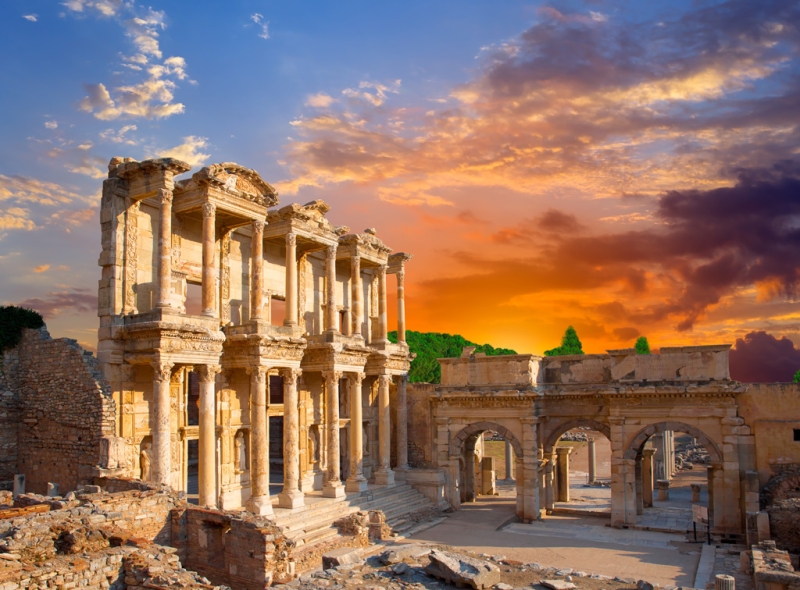
“Everything flows, everything changes,” wrote the philosopher Heraclitus in the 5th century BC. He lived in the large Asia Minor city of Ephesus, which is now located in Turkey, and then was closely intertwined with ancient Greek culture.
The ruins of ancient Ephesus are an open-air museum (on the map). It is located near the town of Selcuk, between the administrative center of western Turkey, Izmir, and the resort of Kusadasi. Tour groups from Istanbul and Antalya come to Ephesus, but it is most convenient to visit it for those who are vacationing in Marmaris or Bodrum.
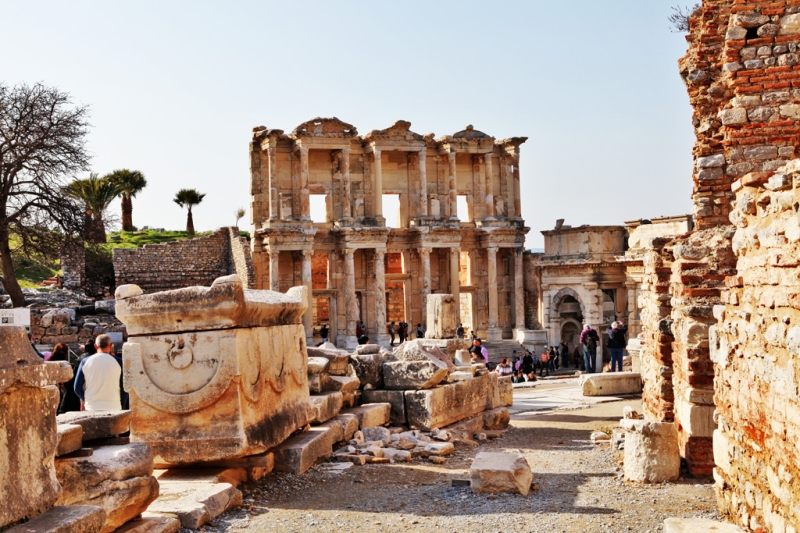
The Legend of the Origin of Ephesus
According to Greek mythology, Ephesus arose during the reign of the Athenian king Codrus. It happened like this. One day, the ruler of Athens invited his son Androcles to his place and gave him an assignment – to found a new great Greek city. At that time, the colonization of the coasts of the Black, Aegean and Marmara seas was actively underway.
According to tradition, before the campaign, the young man turned to the Delphic oracle. The prediction said that the city should be founded where fire, water and wild boar converge in one place. Androcles and his detachment set off on a journey across the Aegean Sea.
The result of the expedition was disastrous, but on the way home the young heir saw a fire on the very shore – fishermen were frying their catch. Suddenly a spark from the fire hit the bushes, and a boar ran out. Androcles recognized the sign and built a new settlement on the site of the fishermen’s camp. The young man named him in honor of his beloved – the mistress of the Amazon city of Ephesia.
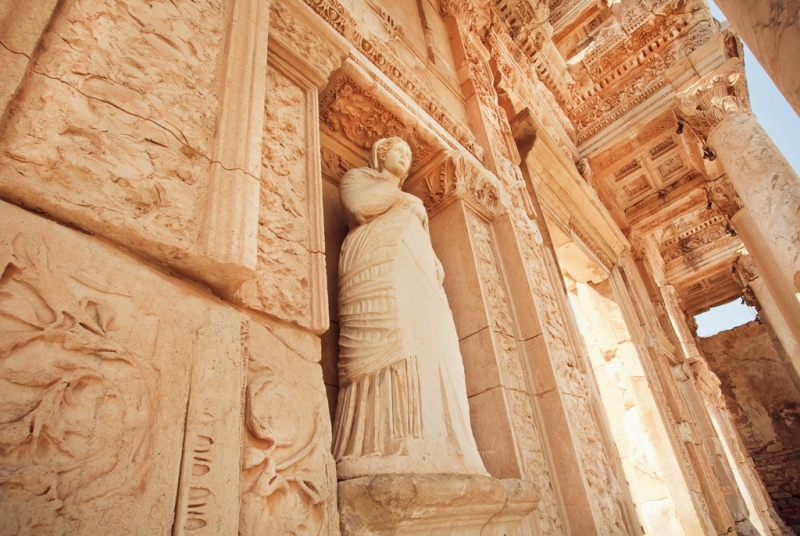
History of the development of Ephesus
Ephesus owes its prosperity to good natural and geographical conditions. Historians distinguish 5 periods of the city’s development:
1) Pre-colonial period
Contrary to legend, the first settlement arose on this site during the Bronze Age approximately 3.5 thousand years ago. An ancient cemetery, fragments of ceramics and fragments of weapons were found.
2) Ionian period
In the 10th century, citizens of Athens occupied the settlement and founded a colony. Thanks to its advantageous location, Ephesus quickly grew rich and developed. In the 6th century BC, one of the 7 wonders of the world was built in the city – the Temple of Artemis. This success did not go unnoticed. Several states competed for the right to own the city: Greek cities, Lydia, Persia and the Seleucid Empire.
3) Roman period
In 132 BC, Ephesus was captured by the Romans. They sharply increased taxes, which angered local residents. An uprising followed, but the attempt to regain independence failed.
Under Emperor Augustus, Ephesus was appointed the capital of the large Roman province of Asia. The city expanded, more than 220 thousand people lived in it. According to the historian Strabo, Ephesus at that time was second only to Rome in size.
4) Byzantine period
In the 3rd century, Ephesus was sacked by the Goths. After the fall of the Roman Empire, the city went to Byzantium. During the reign of the emperors Constantine and Justinian, large construction began in Ephesus: baths, the Basilica of St. John were erected, and old buildings were renovated.
The city suffered greatly after the earthquake of 614. Over time, its harbor was covered with silt from the river, and it became unsuitable for trade. A series of Arab robberies intensified the decline of Ephesus. By the time the crusaders arrived, a small village remained on the site of the great city, surrounded by ancient ruins.
5) Ottoman period
At the end of the 14th century, the surrounding area of Ephesus became part of the Ottoman Empire. The Turks did not restore the city and it was completely abandoned.
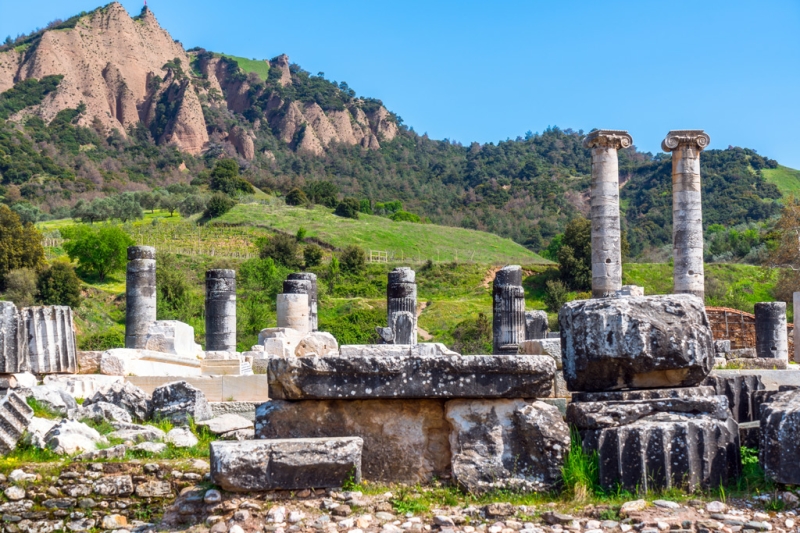
Ephesus today: Temple of Artemis and other attractions
At the end of the 19th century, the British archaeologist John Wood decided to find the legendary Temple of Artemis. After several years of searching, his expedition discovered the remains of a foundation and fragments of several columns. One of them was restored and put in its original place.
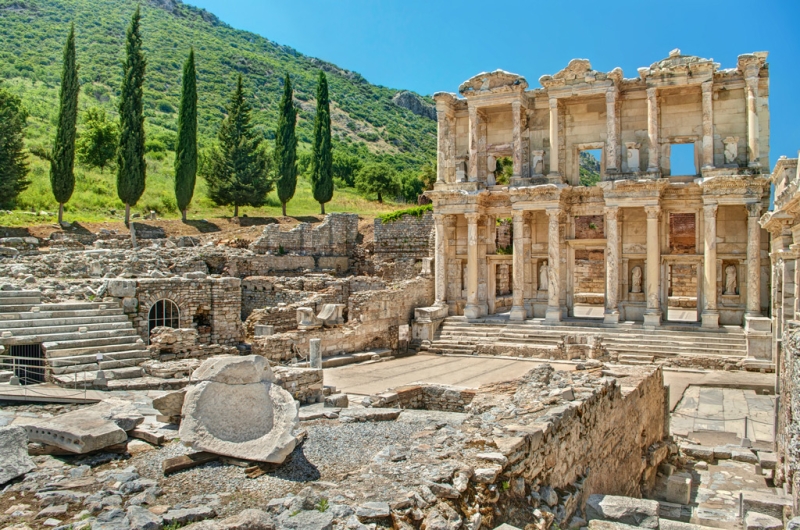
The second famous landmark of ancient Ephesus is the Library of Celsus. All that has been preserved from it is a two-tier façade, statues and a sarcophagus with the remains of Tiberius Julius Celsus, proconsul of the Roman province of Asia. The building was completed by 135 and could hold up to 12,000 scrolls. According to historical data, the Ephesian library was the second largest in the world after the Alexandrian library.
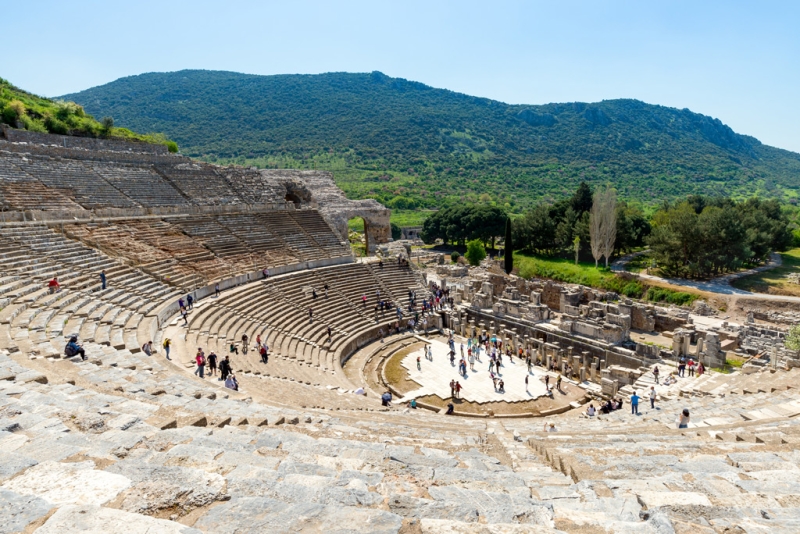
While walking through the archaeological area, pay attention to the famous Ephesian amphitheater. It is older than other buildings of this type in Turkish cities. In ancient times, the amphitheater accommodated 25 thousand spectators. The Odeon Theater, built in 150, is also well preserved. It could accommodate one and a half thousand spectators.
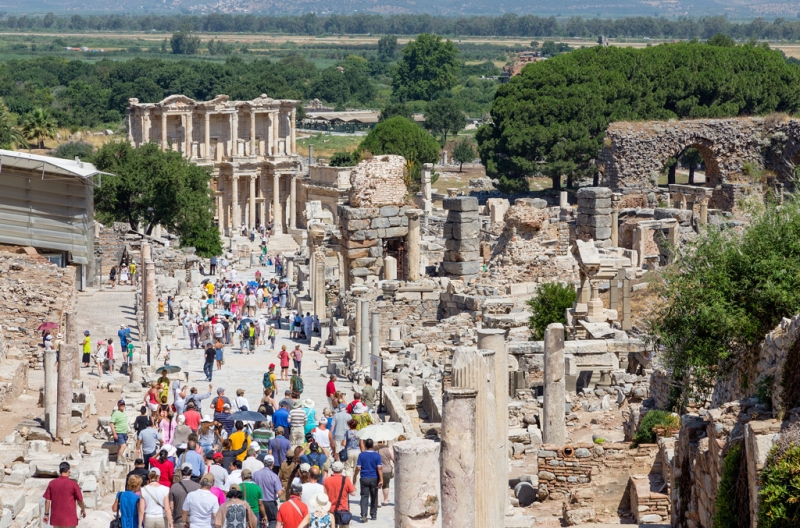
How to get to Ephesus
To see Ephesus, take a tour in one of the cities of Turkey, or get to Izmir airport. Flights fly there from Ankara, Istanbul and Antalya. From Izmir, take a train or bus to the town of Selcuk. It has nice mini-hotels where you can stay overnight and prepare for a walk through the ruins of ancient Ephesus. The city museum is open daily from 9 a.m. to 5 p.m. Ticket price – 20 liras (400 rubles),
for children under 12 years of age admission is free.
When traveling, pay for purchases with a OneTwoTrip loyalty card, and up to 10% of the order amount on OneTwoTrip, as well as up to 2% of any purchases paid for with the card, will be returned to your account.


